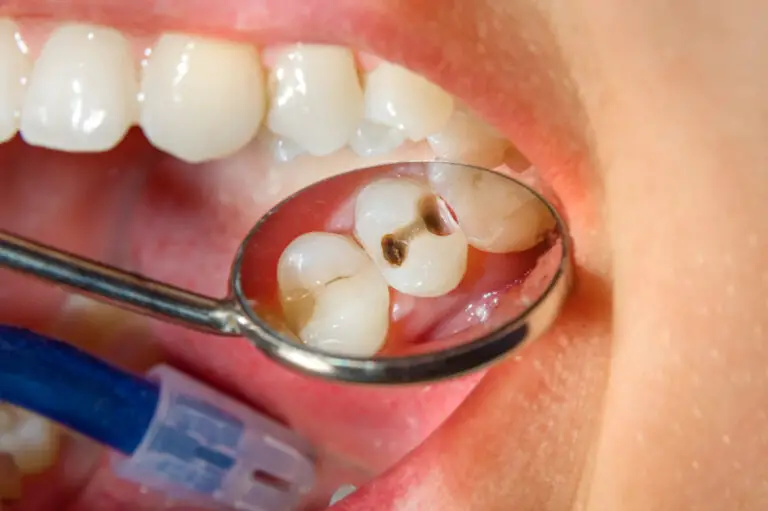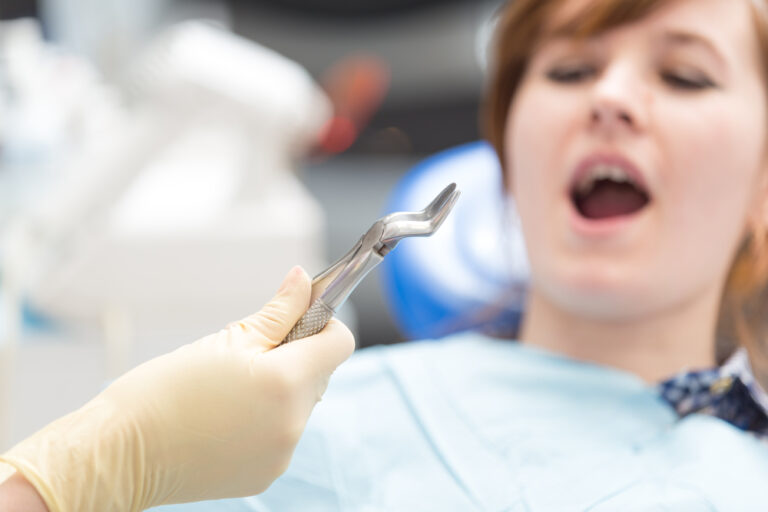Are you experiencing gum recession or bone loss around your teeth? Do you notice that your teeth are becoming loose or shifting in position? These are common signs of periodontitis, a serious gum infection that can lead to tooth loss if left untreated. Fortunately, there are ways to regrow gum and bone around your teeth and prevent further damage.
One method to regrow gum tissue is through gum grafting, where tissue from another part of your mouth is surgically attached to the affected area. This can help cover exposed roots and reduce sensitivity. Another option is to use growth factors, which stimulate the growth of new gum tissue. Your dentist may also recommend scaling and root planing, a deep cleaning procedure that removes plaque and bacteria from the roots of your teeth.
To regrow bone around your teeth, your dentist may suggest bone grafting, where a small piece of bone is transplanted to the affected area. This can help rebuild the bone and provide support for your teeth. Additionally, maintaining good oral hygiene habits, such as brushing twice a day and flossing daily, can help prevent further bone loss and promote the regrowth of healthy bone tissue.
Understanding Gum and Bone Loss
If you have noticed that your teeth are becoming loose or that your gums are receding, it may be a sign that you are experiencing gum and bone loss. Gum and bone loss can occur due to a variety of reasons, including poor oral hygiene, gum disease, and tooth loss. Understanding the causes and symptoms of gum and bone loss can help you take steps to prevent further damage and potentially even regrow lost gum and bone tissue.
Causes of Gum and Bone Loss
Gum and bone loss can occur due to a variety of factors, including:
- Poor oral hygiene: Failing to brush and floss regularly can lead to the buildup of plaque and tartar, which can cause gum disease and eventual bone loss.
- Gum disease: Gum disease is an infection of the gums that can cause inflammation and damage to the soft tissue and bone that support your teeth.
- Tooth loss: When a tooth is lost, the bone that supported it can begin to deteriorate, which can lead to further tooth loss and gum recession.
Symptoms of Gum and Bone Loss
Some common signs and symptoms of gum and bone loss include:
- Loose teeth
- Receding gums
- Changes in the way your teeth fit together
- Pain or sensitivity in your teeth or gums
- Bad breath
If you are experiencing any of these symptoms, it is important to talk to your dentist as soon as possible. Early intervention can help prevent further damage and may even allow for the regrowth of lost gum and bone tissue.
In the next section, we will discuss some potential treatments for regrowing gum and bone tissue.
Causes of Gum and Bone Loss
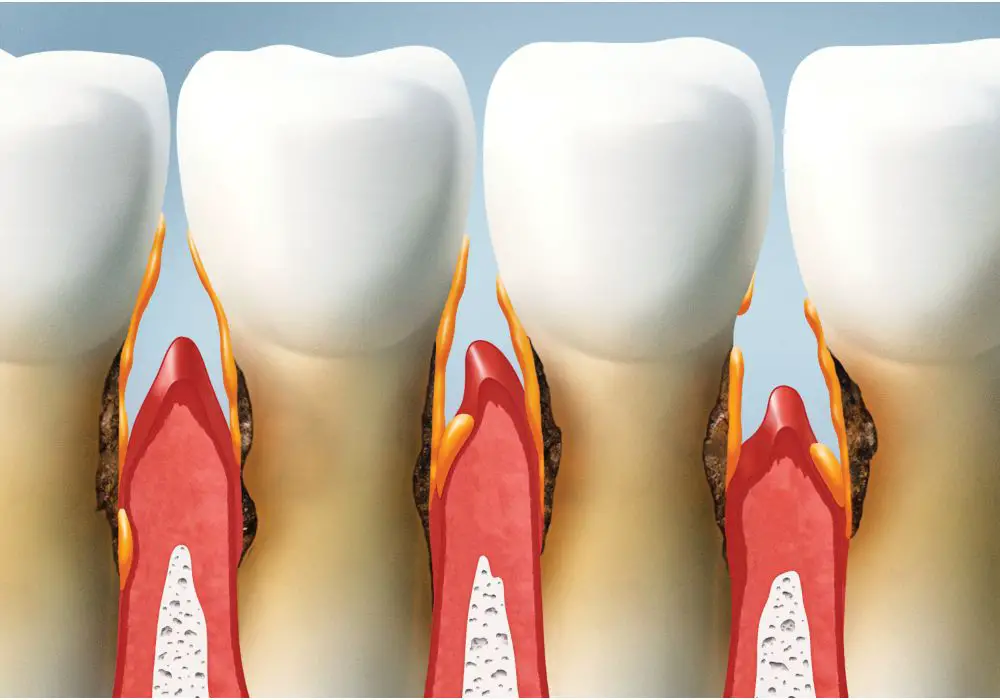
There are several reasons why you may experience gum and bone loss around your teeth. Here are some of the most common causes:
Poor Oral Hygiene
Not taking proper care of your teeth and gums can lead to the buildup of plaque and bacteria, which can cause inflammation and infection. Over time, this can lead to gum disease, which can cause your gums to recede and your bone to deteriorate.
To prevent gum and bone loss due to poor oral hygiene, make sure to brush your teeth twice a day, floss daily, and visit your dentist regularly for cleanings and checkups.
Smoking and Tobacco Use
Smoking and using other tobacco products can have a significant impact on your oral health. Tobacco use can reduce blood flow to the gums, making it harder for your body to fight off infection. It can also weaken your immune system, making it easier for bacteria to grow and cause damage.
If you smoke or use other tobacco products, quitting can help improve your oral health and reduce your risk of gum and bone loss.
Genetics
Some people are more susceptible to gum disease and bone loss due to their genetics. If you have a family history of gum disease or tooth loss, you may be at a higher risk.
While you can’t change your genetics, you can take steps to prevent gum disease and maintain good oral health.
Hormonal Changes
Hormonal changes can also play a role in gum and bone loss. Women may experience gum sensitivity and inflammation during pregnancy or menopause, which can increase their risk of gum disease.
If you’re experiencing hormonal changes, make sure to pay extra attention to your oral hygiene and visit your dentist regularly to prevent gum and bone loss.
By understanding the causes of gum and bone loss, you can take steps to prevent it and maintain good oral health.
Symptoms of Gum and Bone Loss
If you are experiencing gum and bone loss, you may notice some of the following symptoms:
- Your teeth may feel loose or appear longer than usual.
- You may experience sensitivity to hot or cold foods and drinks.
- Your gums may be red, swollen, or tender.
- You may notice bleeding when you brush or floss your teeth.
- You may experience bad breath or a bad taste in your mouth.
- You may notice a change in the way your teeth fit together when you bite or chew.
It is important to note that gum and bone loss can occur without any noticeable symptoms, which is why it is important to attend regular dental check-ups. If left untreated, gum and bone loss can lead to tooth loss and other serious dental problems.
If you are experiencing any of these symptoms, it is important to see a dental professional as soon as possible. Your dentist can perform a thorough examination and recommend appropriate treatment options to help you regrow gum and bone around your teeth.
Professional Dental Treatments
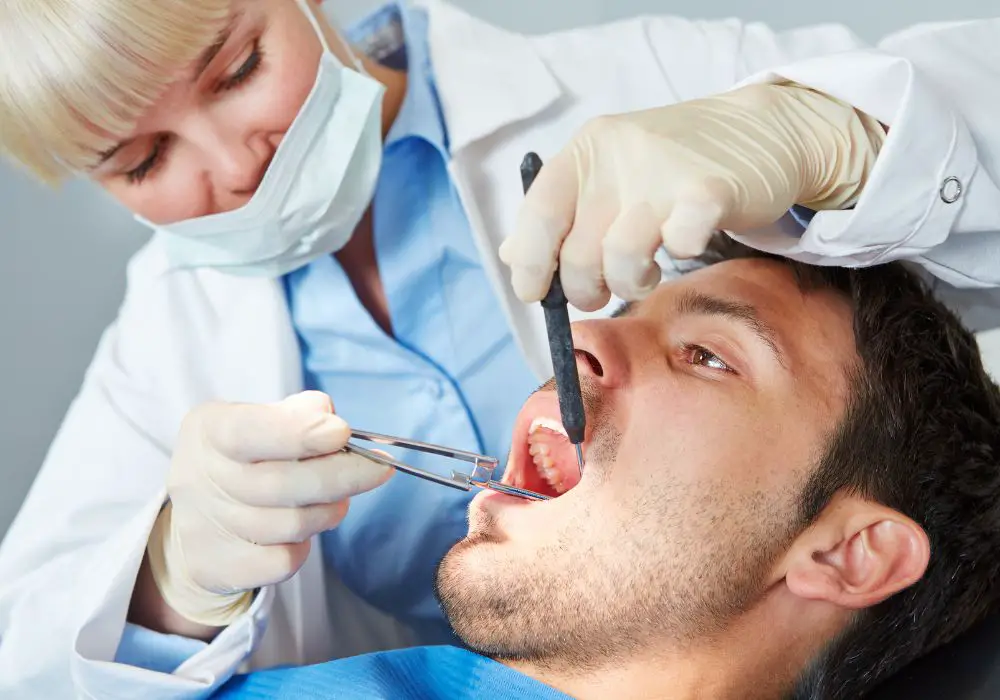
If you’re looking to regrow gum and bone around your teeth, there are several professional dental treatments that can help. Here are a few to consider:
Scaling and Root Planing
Scaling and root planing is a deep cleaning procedure that removes plaque and tartar from the teeth and gums. During the procedure, your dentist or hygienist will use special tools to clean below the gumline and smooth the roots of your teeth. This helps to remove bacteria and promote healing of the gums. Scaling and root planing can help to prevent further damage to the gums and bone, and may even help to regrow some lost tissue.
Bone Grafts
If you have lost bone around your teeth due to periodontal disease, a bone graft may be recommended. During this procedure, your dentist will take a small piece of bone from another part of your body (or from a donor) and graft it onto the affected area. Over time, the graft will fuse with your existing bone and help to regenerate new bone tissue. This can help to support your teeth and prevent further bone loss.
Tissue Regeneration
Tissue regeneration is a newer technique that uses special proteins to stimulate the growth of new gum tissue and bone. During the procedure, your dentist will apply a special gel or membrane to the affected area, which contains the proteins. Over time, the proteins will stimulate the growth of new tissue, helping to regrow gum and bone around your teeth. Tissue regeneration can be a highly effective treatment for more advanced cases of periodontal disease.
Overall, if you’re looking to regrow gum and bone around your teeth, there are several professional dental treatments that can help. Talk to your dentist about which treatment may be right for you based on the severity of your condition.
Home Remedies to Regrow Gums and Bone
If you’re looking for ways to regrow gums and bone around your teeth, there are a few simple home remedies you can try. These remedies are not a substitute for professional dental care, but they can help improve your oral health and prevent further damage.
Proper Brushing Technique
Brushing your teeth properly is one of the most important things you can do to prevent gum recession and promote gum and bone regrowth. Use a soft-bristled toothbrush and brush your teeth gently in a circular motion. Avoid brushing too hard or using a back-and-forth motion, as this can damage your gums and tooth enamel.
Flossing Regularly
Flossing regularly is also essential for maintaining healthy gums and teeth. Use a gentle back-and-forth motion to remove plaque and food particles from between your teeth. If you have trouble flossing, try using a floss pick or water flosser.
Using Mouthwash
Mouthwash can help kill bacteria and freshen your breath, but it’s important to choose the right type of mouthwash. Look for an alcohol-free mouthwash that contains fluoride and antibacterial ingredients. Rinse your mouth with mouthwash after brushing and flossing.
Eating a Balanced Diet
Eating a balanced diet that’s rich in vitamins and minerals can help promote gum and bone regrowth. Try to eat plenty of fruits, vegetables, whole grains, and lean proteins. Avoid sugary and acidic foods and drinks, as these can damage your teeth and gums.
In conclusion, regrowing gums and bone around your teeth requires a combination of good oral hygiene practices and a healthy diet. By following these simple home remedies, you can improve your oral health and prevent further damage. However, it’s important to see a dentist regularly for professional cleanings and checkups.
Preventing Future Gum and Bone Loss
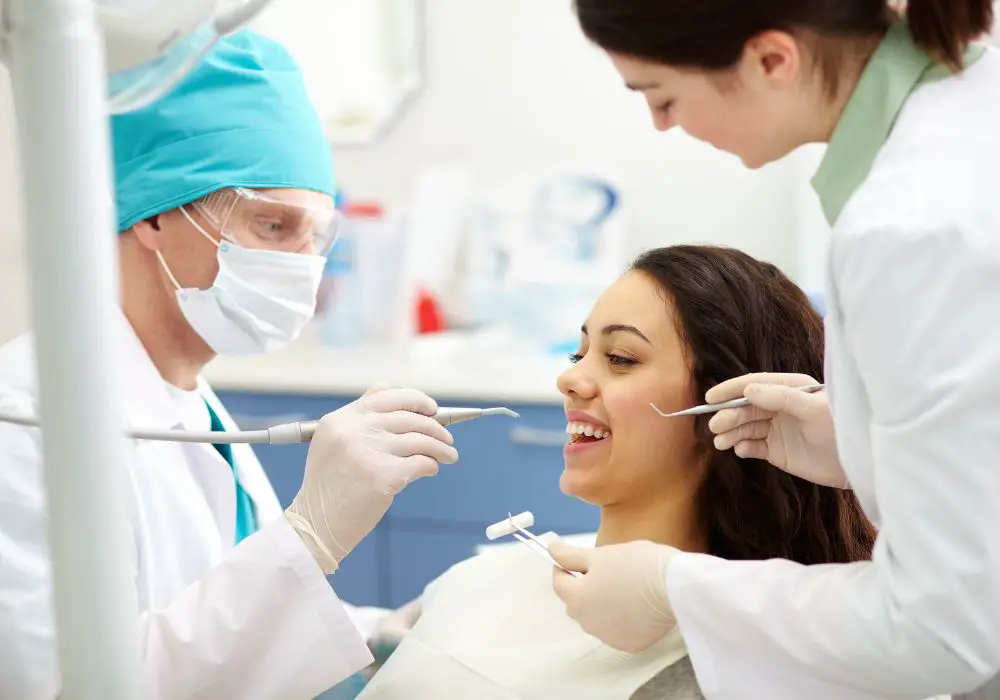
To prevent further gum and bone loss, there are a few things you can do on a regular basis to maintain the health of your teeth and gums. Here are some tips:
Regular Dental Check-Ups
Regular dental check-ups are important for maintaining good oral health. During these check-ups, your dentist can identify any problems early on and provide treatment to prevent further damage. It’s recommended that you visit your dentist every six months for a check-up and cleaning.
Avoiding Tobacco
Tobacco use is a major risk factor for gum disease and bone loss. If you smoke or use other tobacco products, quitting can help prevent further damage to your teeth and gums. Talk to your doctor or dentist about resources to help you quit.
Limiting Sugary Foods and Drinks
Sugary foods and drinks can contribute to the development of gum disease and tooth decay. Limiting your intake of these items can help prevent further damage to your teeth and gums. Instead, opt for healthier options like fruits, vegetables, and water.
By following these tips, you can help prevent further gum and bone loss and maintain the health of your teeth and gums. Remember to schedule regular dental check-ups, avoid tobacco use, and limit your intake of sugary foods and drinks.
Frequently Asked Questions
Is it possible to regrow bone and gum around teeth naturally?
Yes, it is possible to regrow bone and gum around teeth naturally. Good oral hygiene practices like brushing your teeth twice a day and flossing daily can help prevent gum disease and bone loss. Additionally, a diet rich in calcium and vitamin D can help promote bone growth.
What are some effective ways to slow down bone loss in teeth?
Some effective ways to slow down bone loss in teeth include maintaining good oral hygiene, quitting smoking, and consuming a diet rich in calcium and vitamin D. Regular dental checkups and cleanings can also help detect and treat gum disease early, which can prevent further bone loss.
What are the symptoms of bone loss in teeth?
The symptoms of bone loss in teeth include loose teeth, receding gums, bleeding gums, bad breath, and changes in the way your teeth fit together when you bite. If you experience any of these symptoms, it is important to see a dentist as soon as possible.
Can bone and gum be rebuilt?
Yes, bone and gum can be rebuilt through a process called bone grafting. During this procedure, a small piece of bone is taken from another part of your body or a donor and placed in the area where bone loss has occurred. Over time, the bone graft will fuse with your existing bone, promoting new bone growth.
What are some Ayurvedic treatments for dental bone loss?
Ayurvedic treatments for dental bone loss include using herbal remedies like neem, clove, and turmeric. These herbs have anti-inflammatory properties that can help reduce gum inflammation and promote healing. Oil pulling, a traditional Ayurvedic practice, can also help remove harmful bacteria from the mouth.
Can bone loss in gums be replaced?
Yes, bone loss in gums can be replaced through a process called guided tissue regeneration. During this procedure, a small piece of mesh is placed between the gum and bone, creating a space for new bone to grow. Over time, the mesh dissolves and is replaced by new bone tissue.


